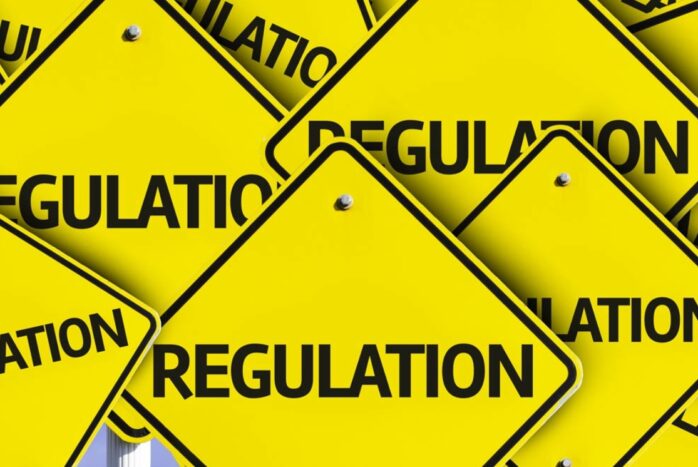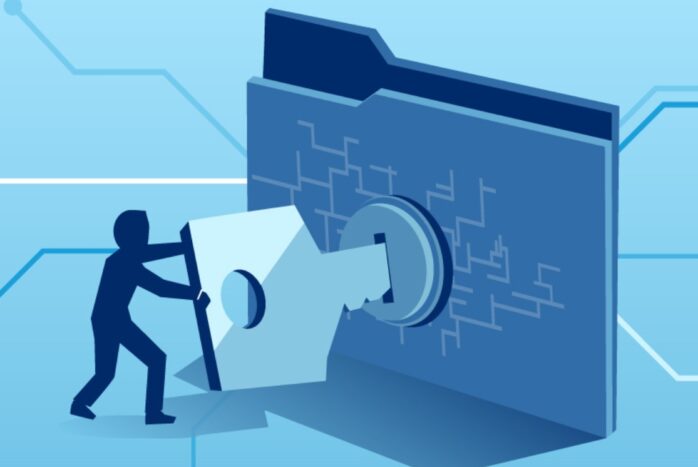
Data security is critical for businesses in every industry and vertical. As cybercrimes continue to rise, companies face increased scrutiny from regulators to ensure they take appropriate measures to protect sensitive data. In this post, we will explore how businesses can ensure compliance with regulatory requirements for data security, such as PKI encryption through PKI software solutions.
Understand The Regulatory Landscape
The first step in ensuring compliance with regulatory requirements for data security is to understand the landscape. This requires keeping up to date with the latest regulations, standards, and guidelines from industry bodies, governmental agencies, and other authorities.
The regulatory landscape is constantly evolving, so staying informed is critical. Some essential regulatory requirements to consider include GDPR, HIPAA, and PCI-DSS.
PKI encryption addresses those regulatory requirements. It helps protect sensitive data, maintain confidentiality, and reduce the risk of data breaches and unauthorized access.

Conduct A Risk Assessment
Before designing and implementing an information security program, it’s important to understand what risks your business faces.
Conducting a risk assessment is essential in identifying your details security posture vulnerabilities. This assessment should consider factors such as the types of data you collect, process, and store and the safety measures you currently have in place.
The risk assessment results will help you prioritize your data security efforts and allocate resources accordingly.
Implement Appropriate Security Controls
Based on the results of your risk assessment, you should implement appropriate protection controls to protect your sensitive data. The safety controls you implement will depend on the nature of your business and the types of data you handle.
Some common security controls include access controls, encryption, firewalls, and intrusion detection and prevention systems. Implementing a layered protection approach that provides multiple levels of protection is essential.
Establish Policies And Procedures
Establishing clear policies and procedures is another critical aspect of ensuring compliance with regulatory requirements for data security. Policies and procedures should cover all aspects of data security, including access controls, user authentication, data backup and storage, incident response, and disaster recovery.
It’s vital to communicate policies and procedures to all employees and provide regular training to ensure everyone understands their responsibilities.

Regularly Monitor And Test Security Controls
Once you have implemented security controls and established policies and procedures, it’s important to regularly monitor and test them to ensure they function as intended. This includes performing regular vulnerability scans and penetration tests to identify weaknesses in your safety posture.
Regular testing and monitoring are essential for identifying and addressing security gaps before cybercriminals can exploit them.
Conduct Regular Audits
Regular audits are another essential aspect of ensuring compliance with regulatory requirements for data protection. Audits can help you identify your details security program’s weaknesses and ensure that you meet regulatory requirements.
Audits should be performed by an independent third party to assess your protection posture objectively.
Plan For Incident Response
Finally, it’s essential to have a solid incident response plan in place. A comprehensive incident response plan should cover all data security incidents, including detection, containment, eradication, and recovery.
It’s essential to regularly review and update your incident response plan to ensure that it remains effective in the face of changing threats and regulatory requirements.

Engaging Legal and Compliance Experts
In today’s complex regulatory landscape, organizations must navigate numerous laws and regulations to ensure compliance with data security requirements. Engaging legal and compliance experts can provide valuable guidance and support in this process. This section explores the importance of collaborating with these professionals and highlights their role in achieving regulatory compliance.
Collaborating with legal counsel for interpretation and guidance
Legal counsel plays a critical role in helping organizations interpret and understand the intricate details of security regulations. They can guide specific legal requirements and advise on the necessary steps to ensure compliance. By working closely with legal experts, organizations can understand their obligations, potential risks, and the implications of non-compliance.
Seeking external expertise for compliance assessments and audits
External compliance experts possess specialized knowledge and experience navigating regulatory frameworks. They can conduct thorough assessments of an organization’s information protection practices and identify any gaps or areas of non-compliance. These experts can also assist in conducting external audits to validate compliance and provide recommendations for remediation.

Continuous Improvement and Adaptation
In the ever-evolving landscape of data security regulations, organizations must prioritize continuous improvement and adaptation to stay compliant and protect sensitive information. This section emphasizes the importance of staying up-to-date with regulatory changes and adapting safety practices accordingly.
Importance of staying up-to-date with regulatory changes
Regulatory requirements for data security are subject to frequent updates and amendments. Staying informed about changes in laws and regulations is crucial to ensure ongoing compliance. Organizations should actively monitor regulatory updates, subscribe to industry newsletters, and engage in professional networks to stay abreast of the latest developments.
Adapting data security practices to evolving threats and Regulations
As new threats and vulnerabilities emerge, organizations must continuously assess and enhance their information safety practices. This involves regularly reviewing and updating security controls, technologies, and processes to align with the changing threat landscape. By adopting a proactive approach, organizations can address emerging risks before they become critical security gaps.
Implementing a robust change management process
To facilitate continuous improvement, organizations should establish a structured change management process. This process ensures that any updates or modifications to data safety practices are properly assessed, tested, and implemented. It involves conducting risk assessments, evaluating the impact of changes, and communicating them effectively across the organization.
By prioritizing continuous improvement and adaptation, organizations can maintain a strong facts protection posture and demonstrate a commitment to compliance. This proactive approach not only helps mitigate risks but also enhances the organization’s ability to respond to new challenges and emerging regulatory requirements.

Conclusion
In today’s world, ensuring compliance with regulatory requirements for data safety is more important than ever. Cybercrime continues to rise, and businesses face increased scrutiny from regulators to ensure they take appropriate measures to protect sensitive data. Following the steps outlined can help companies stay updated and build a strong security posture that protects sensitive data from cyber threats. Businesses can ensure compliance with regulatory requirements for data security and protect themselves from cybercrime.











